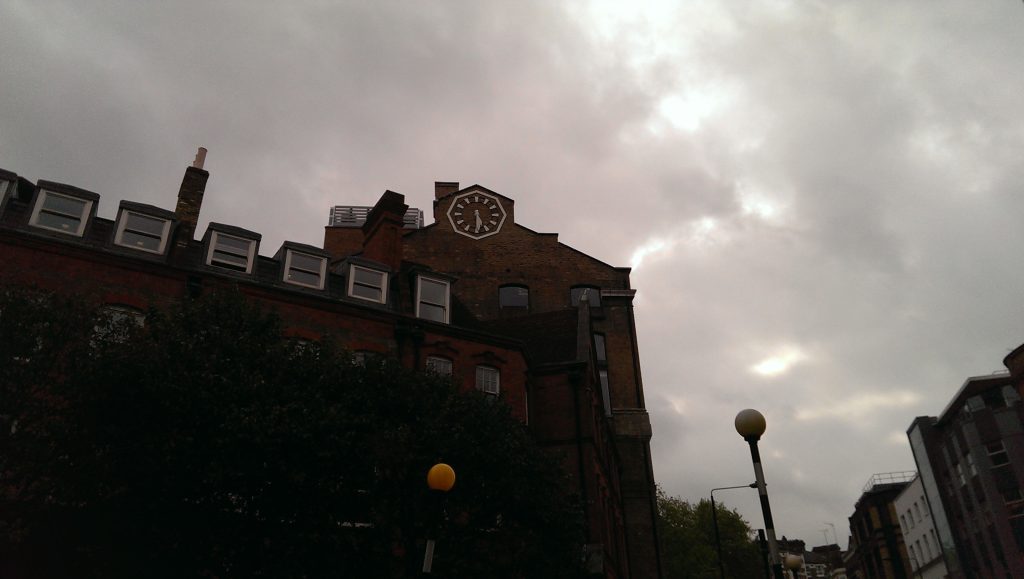
When I first got involved in this stopped clocks things, this enormous dial on the Lever Building, rusted and forlorn always captivated me. And for good reason – since the beginning of the 18th century, Clerkenwell was the centre of clock- and watch-making thanks mostly to the influx of Huguenots to the capital.
The Huguenots were welcomed for their craftsmanship. They were multi-skilled in weaving, book-binding and wig-making among other trades and mostly settled in Clerkenwell, which was then just outside London’s city walls and afforded them a more comfortable living. They helped transform Clerkenwell into the home of the clock-making industry; streets became lined with subdivisions of the trade from escapement making to engine turning and finishing.
With the emerging watch-making market in Switzerland, the trade in Clerkenwell began to dwindle. The Swiss revolutionised the trade and benefited from the use of new technology to mass produce watches. The English resisted adopting the new approach because they did not want to compromise on quality or craftsmanship. One of their strongest critics was John Bennett, a horological retailer in the City of London. Hefound the Swiss model of manufacturing favourable and established the Horological Institute with other clock-makers, who sought to raise the standards of British horology.
Location: View on Map
Yeah, I saw this every single day cycling to work. So often I’d see it and then take a detour somewhere I’d not ridden just in case I could find another stopped clock 🙂